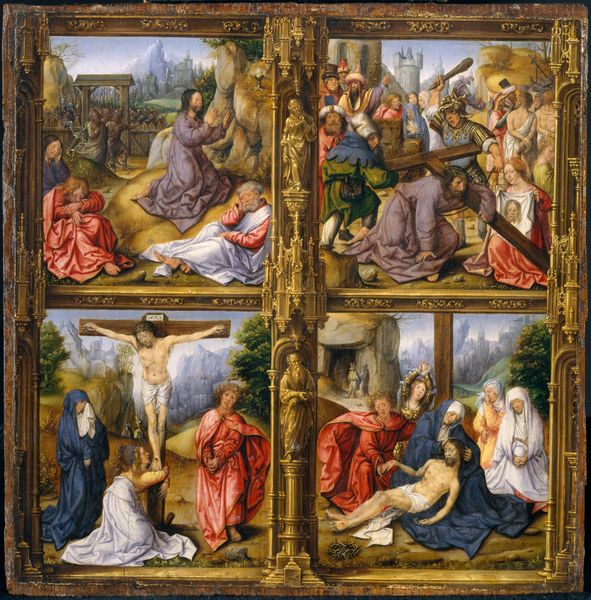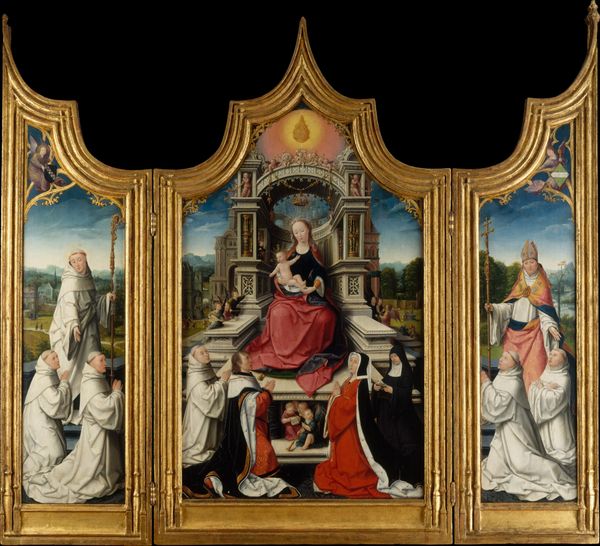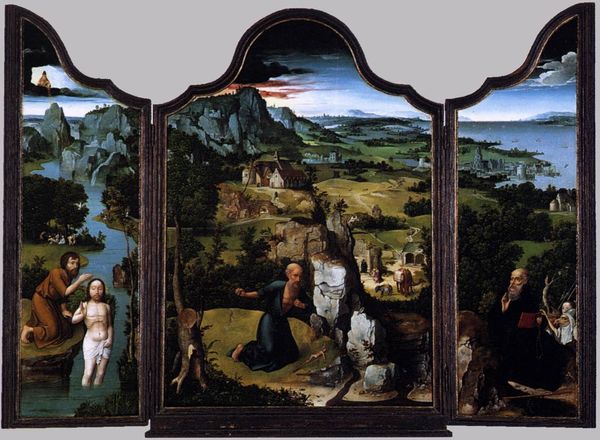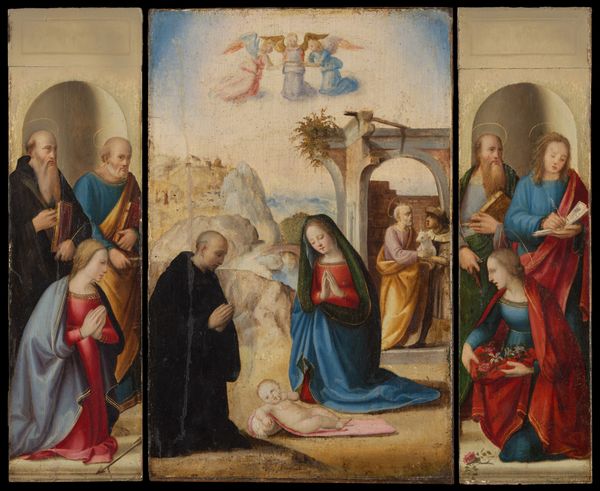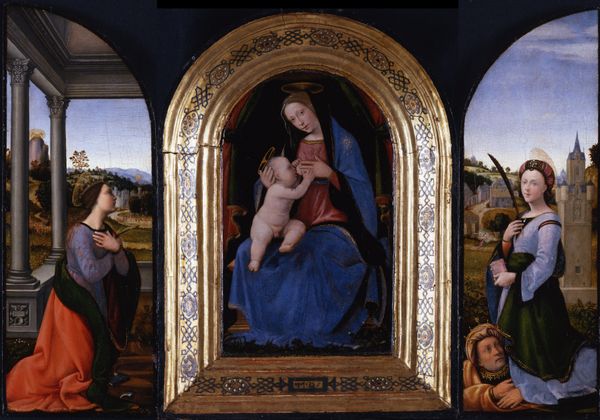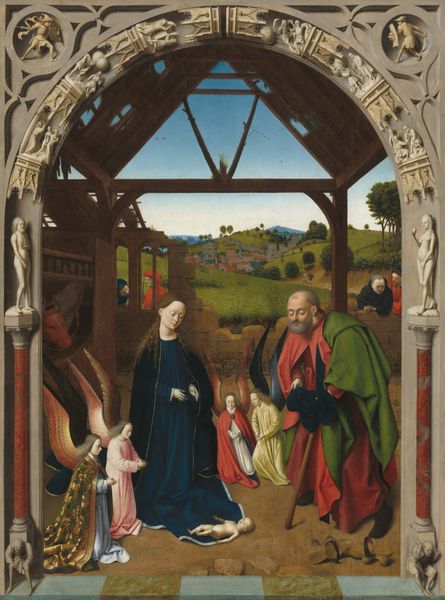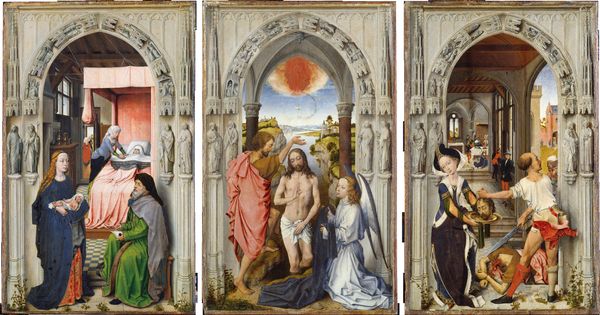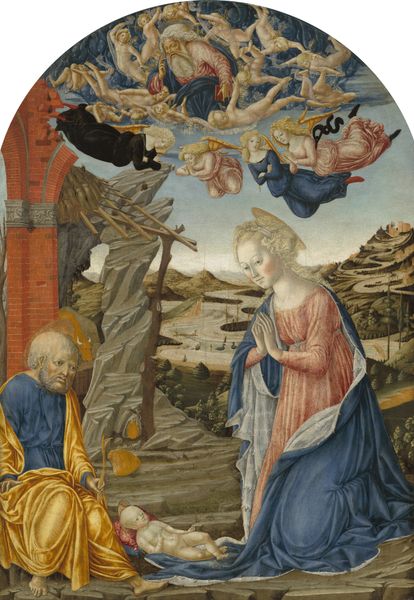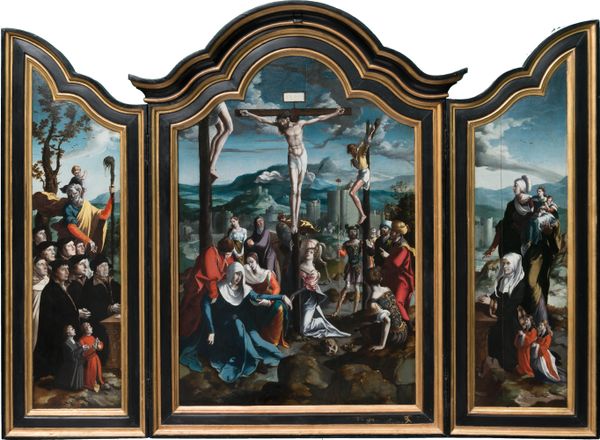
painting, oil-paint
#
portrait
#
medieval
#
painting
#
oil-paint
#
gothic
#
landscape
#
figuration
#
romanesque
#
oil painting
#
group-portraits
#
men
#
crucifixion
#
history-painting
#
northern-renaissance
#
virgin-mary
#
christ
Dimensions: Shaped top: central panel, painted surface 38 3/4 x 29 1/4 in. (98.4 x 74.3 cm); each wing, painted surface 39 3/4 x 12 7/8 in. (101 x 32.7 cm)
Copyright: Public Domain
Joos van Cleve created this triptych of the Crucifixion in the early 16th century, using oil paint on wood panels. The smooth surfaces and luminous colors are the results of careful layering and blending of pigments with an oil-based medium. Note the artist's meticulous approach, from the rendering of skin tones to the intricate folds of drapery, and the atmospheric landscapes. All this testifies to the artist's virtuosity and the workshop assistants who helped him. The choice of oil paint allowed for greater realism and detail than previous painting methods, contributing to its cultural significance. By this time, oil painting had become increasingly popular for both religious and secular art, reflecting the growing wealth and patronage of the merchant class in Northern Europe. This triptych demonstrates the social and economic forces that shaped artistic production during the Renaissance, challenging any strict separation of fine art and craft.
Comments
No comments
Be the first to comment and join the conversation on the ultimate creative platform.

